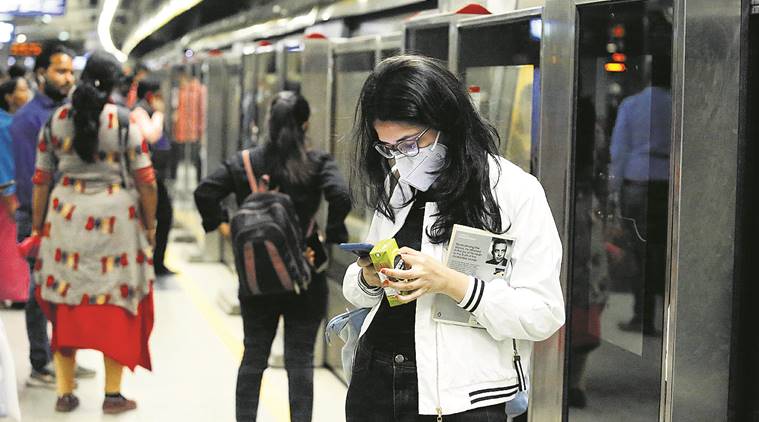 DMRC has lost over Rs 600 cr due to suspension of services, a source said. Archive
DMRC has lost over Rs 600 cr due to suspension of services, a source said. Archive
A total freeze on earnings, which has lasted 76 days now, coupled with the prospect of having to run sparsely crowded coaches even when services resume and the likelihood of people avoiding public transport are some of the concerns the Delhi Metro is having to grapple with.
As per official records maintained by Delhi Metro Rail Corporation (DMRC), the company earns an average of Rs 9 crore as revenue from ridership on a usual weekday. This excludes the DMRC’s earnings from sources such as advertisements, property development, feeder buses and consultancy.
A look at its earnings shows that even on March 21, the last day of services before the lockdown began, DMRC had earned Rs 2.7 crore from ridership. That day, a little over 9.6 lakh people had used the network for commuting, below the daily average which hovers between 26-32 lakh.
On March 17, the Metro earned Rs 7.6 crore from 25.26 lakh commuters. A month earlier, on February 21, DMRC earned Rs 7.4 crore as ticket revenue from 26 lakh commuters. On January 21, the company had posted earnings of Rs 9.1 crore from 32 lakh commuters. “Even by conservative estimates, DMRC has incurred losses of over Rs 600 crore on account of suspension of services,” sources said.
When contacted, a DMRC spokesperson told The Indian Express: “The lockdown is still on and there has been no revenue during this period. However, fixed expenditure on staff salary, bare minimum maintenance, etc, are being incurred; the details are not available as on date.”
The annual reports of the DMRC show that the company’s total revenue generation was Rs 5,387 crore, Rs 6,211 crore and Rs 6,461 crore in the years 2016-17, 2017-18 and 2018-19 respectively. Out of the total, the earnings — excluding expenditure — from sale of tickets during these years were Rs 2,179 crore, Rs 3,027 crore and Rs 3,582 crore respectively.
The DMRC, while resisting the move to make rides for women free, had last year written to the Delhi government, stating it has an obligation to pay back huge debt of approximately Rs 32,000 crore. Metro, right from the inception, has been meeting a lion’s share of its construction expenses by taking loans from Japan International Cooperation Agency (JICA).
Before starting work on Phase IV, it raised its borrowing limit to Rs 72,000 crore, having reached the previous cap of Rs 42,000 crore. It repaid around Rs 680 crore, including interest, to JICA in 2016-17, Rs 797 crore in 2017-18 and Rs 1,062 crore in 2018-19.
DMRC told The Indian Express that since March 2020, the company has paid Rs 573 crore to JICA on account of loan and interest. “Future payments will depend on the financial position of DMRC once operations resume,” the company added in a statement.
Once services resume, DMRC will be faced with the twin challenges of ensuring social distancing inside trains — possibly leaving alternate seats empty and at least a gap of one metre between passengers if standing commute is allowed — and attracting people towards public transport.
Currently, around 250-300 commuters travel, on an average, inside every coach. This implies that an eight-coach train can carry up to 2,400 commuters, which will be cut by over half going by the Standard Operating Procedure likely to be enforced once services resume.
“DMRC has to follow government’s guidelines on social distancing among passengers, as far as fare-box revenue is concerned. Non-fare box revenue depends on market conditions and is governed by demand and supply principle,” said a spokesperson.